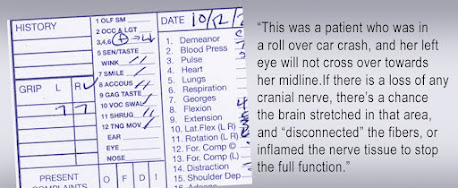By Doreen Bridgman, MS,CCC-SLP-CBHC
By incorporating brain healthy nourishment (in the form of brain healthy lifestyle choices), and learning (and using) specific attention and memory strategies, you can optimize your recovery from concussion and improve your overall performance. You’ll simply learn how to use your brain differently… by compensating, or learning to work around your difficulties.
Here’s what we mean:
3. Get physical. Exercise is key, because it promotes neuroplasticity, your brain’s ability to adapt, reorganize, and form new connections. Research has shown that strength training and aerobic exercise are both important, each improving cognitive function and mood in different ways. So, it’s important to incorporate both kinds of exercise into your daily routine. Yoga and tai chi combine movement and mindfulness which can give you the benefits of exercise while also helping to decrease stress. Be sure to consult your medical provider before starting any exercise program.
5. Attention and memory techniques. You may be experiencing difficulties with memory and thinking, even after completing your course of rehabilitation therapy. There are simple techniques and strategies you can learn that can help with attention and memory, and improve your ability to manage daily tasks. These strategies range from acronyms and mnemonics, storytelling, and associative memory techniques. All of these techniques (and more) are taught in the Long Live Your Brain program.
6. Social and emotional support. Staying socially active is important for your continued recovery. Engaging in social activities and connecting with friends and family provide the emotional support you need and can prevent feelings of isolation, which can negatively impact your brain health overall, further slowing your recovery from concussion. Integrating brain health strategies into your life following a concussion can increase your brain’s resilience and lead to a more complete recovery. You can find attention and memory strategies like these, in addition to more nuggets of wisdom that will teach you how to nourish and heal your brain can be found in BrainThrive’s Long Live Your Brain program. LLYB is a fun and friendly online group brain health and education program for people who want a more reliable memory and clearer thinking. The consistent implementation of these strategies, along with lifestyle choices that can support your healthy brain can lead to a brain that’s healthier, and works better for you every day - so get started today!
If you want to learn more about the Long Live Your Brain program, visit our website at www.longliveyourbrain.com.
ABOUT THE AUTHOR:
DOREEN BRIDGMAN (aka the Cognitive Coach) is a Speech Language Pathologist and Brain Health Coach with over 30 years of experience. Specializing in cognition, executive functioning, and pragmatics, she focuses on brain injuries, particularly post-concussion syndrome and ADHD. Doreen's roles include the Center for Cognitive Rehabilitation (UMDNJ), Center for Head Injuries-JFK, and collaboration with Neuropsychologists. Her expertise covers executive functioning, interpersonal communication, coaching individuals with ADHD, and working with clients struggling to manage daily demands. Doreen empowers clients to achieve goals through strengths and strategic development. Her passion for Brain Health lead to the establishment of BrainThrive Consulting LLC, offering online Brain Health education with Marilyn Abrahamson.
By: Dr. Jerry Dreessen
There are concussion protocols that we perform in the clinic. To process this type of patient starts with a questionnaire about:
* Cognitive abilities: What are the things that they can or can't do?
* Do they have a headache?
* Are they having a hard time focusing?
We also get into studying their emotional state as far as any feelings of SADNESS. Some people may have immediate reactions and seek help right away, while others come in for a consult weeks later.
THE 12 POINT CRANIAL NERVE CHECK
A standard exam is studying a CRANIAL NERVE CHECK. Not only do you have the brain sitting in the skull with a brain stem, which can be greatly affected with a whiplash scenario, but in the floor of the skull, there's 12 sets of nerves that come out and they perform different functions. This is often overlooked. There are many cases that do not show apparent concussion symptoms, but if they have one of the cranial nerves that doesn't work properly, this is a sure giveaway.
We can start by helping that nerve system heal either through nutrition or through cognitive exercises but also eliminating the inflammation. Reading an MRI can be a challenge when looking for any mild type of inflammation in the brain- but with the proper diagnosis, we can reduce not only the concussion, but the possible post traumatic stress disorder and, and personality changes that can go along with it.
This standard process of reading the performance of the cranial nerve means studying 12 different nerves. This test helps determine if there's any kind of cranial nerve loss due to a car accident or sports injuries.
The first is the OLFACTORY nerve; this conveys the sense of smell. Some people can come in, barring the challenges of Covid symptoms and may already have loss of smell. Otherwise, if the accident may have affected their ability to smell, that's one signal that the olfactory nerve isn't functioning properly. (2) The next nerve that we check is the OPTIC nerve and that is what transmits information including blurry vision vs. the ability to focus on an object. Retinal reaction to light gets us the pupillary response.













